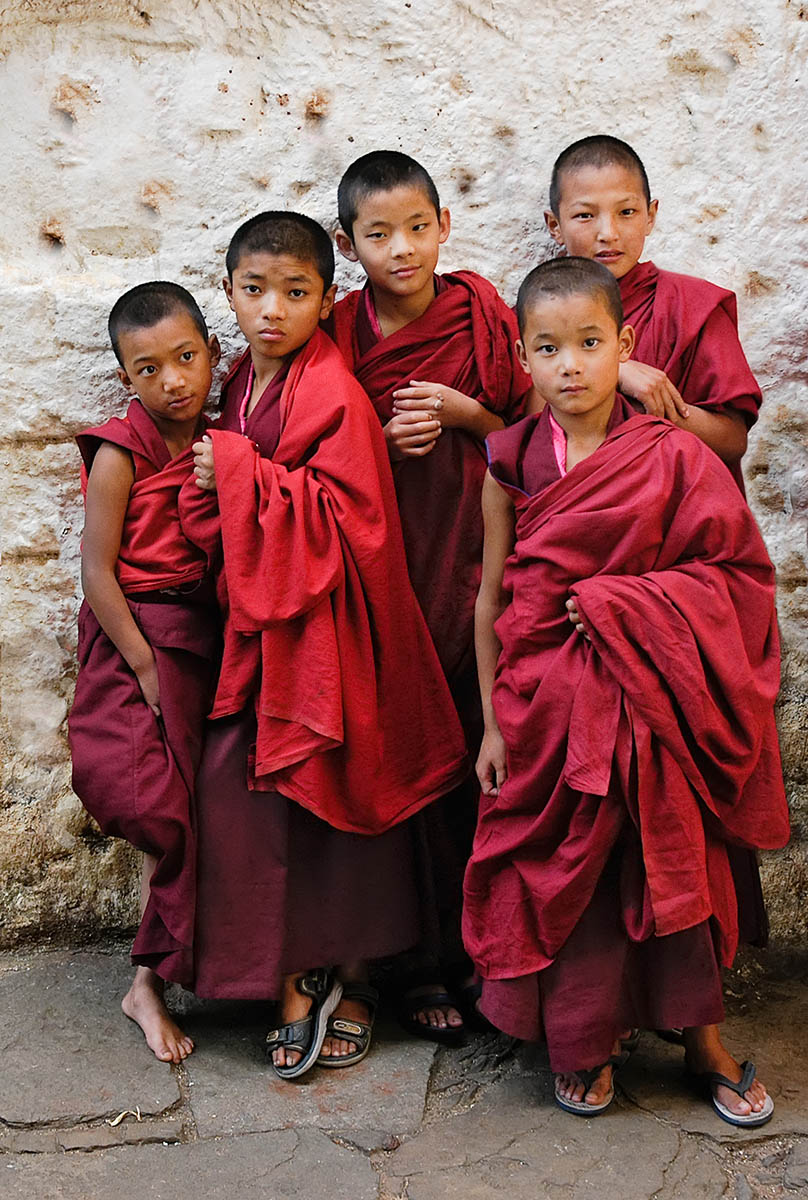Lining the halls of the Law School are portraits of tenured professors, former deans, donors, and Supreme Court justices. Their apparent purpose is equal parts inspirational and aspirational: study hard enough and you’ll climb to the top of the profession. Yet strewn among these portraits are some very different images: a gaggle of Vietnamese children laughing uproariously, a group of solemn Bhutanese śrāmaṇeras clad in crimson robes, a Greek woman peering from the door of her home while her dark clothing blends into the shadows of her doorway.
These photographs are the work of Professor Emeritus Henry Steiner, who presented Eyeing the World,[1] a hardbound collection of his photographs, on Thursday, Sept. 29. Professor Steiner, who founded Harvard Law School’s Human Rights Program in 1984, is a pioneering author in the field of human rights. For the past forty years, his work carried him across the globe, and his camera was never far from his side.
“Photography is not my pastime. It’s not a hobby. It is my deep passion,” Steiner, 83, told the standing-room-only audience gathered in the Milstein Conference Center. “I published this book because I wanted to leave a personal legacy. I very much doubt that any of my grandchildren will read that ‘brilliant’ article that I wrote some time back, but they are going to look at a photography book.”
Depicting scenes ranging from Kathmandu to Copacabana, Bhutan to Buenos Aires, Steiner’s photos are evocative and compositionally compelling. Blue lines dash across Antarctic landscapes, and a family of sugar cane workers in Brazil’s Northeast stands in contrast to the lush grove of sugar cane behind them. An elderly woman on the Greek island of Corfu struggles to climb a slope that likely leads to her home, and a South Indian man is dwarfed by an impossibly large boulder in Tamil Nadu.
While visually striking, Steiner’s images don’t appear at first glance to require much of the viewer. Legendary street photographer Henri Cartier-Bresson’s images ended with an exclamation point (“Quelle moment décisif!”), and social documentarian Sebastião Salgado’s images ended with a question mark (“E agora, o que você fará?”). Steiner’s, on the other hand, seem to be connected by an ellipsis, each image evoking a sense of the quiet dignity of its subjects as well as the man behind the lens.
Steiner says his book’s viewers won’t see “a single Auschwitz, Cambodian genocide, emaciated children with swollen bellies, or other scenes that portray man’s cruelty to man.”
“I’m looking at what could we be like if the ideals of international human rights were realized,” Professor Steiner said. “What I’m drawn to in taking pictures are people and nature expressing the equal human dignity, the sheer humanity and the majesty captured in the ideals of human rights.”
This subtle message appears to comport with Professor Steiner’s academic work, which foresaw and guided the growth of global commerce, and with it, shaped the development of the field of international human rights.
Within the pages of Eyeing the World, Steiner’s photos are a reflection of the humanistic optimism that inspired his groundbreaking scholarship. Yet it’s likely that the force of his images will be felt most strongly in the halls of WCC, where his photographs remind us that the ultimate aspiration of a Harvard Law student is not just to climb up, but to venture out.
“I think you can’t be committed to a field like international human rights and not be something of an optimist to assume that there’s something transcendent in our lives that we’re working toward,” he said.
[1] Eyeing the World is available for viewing in the Law Library’s Red Set.






